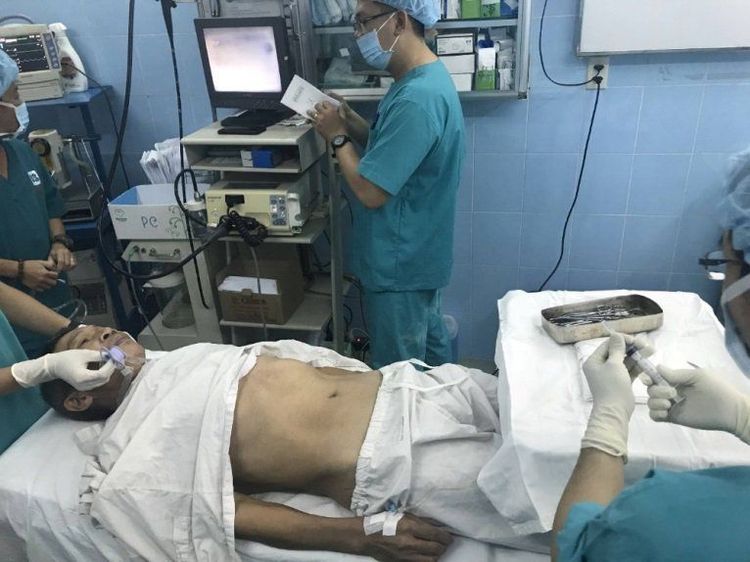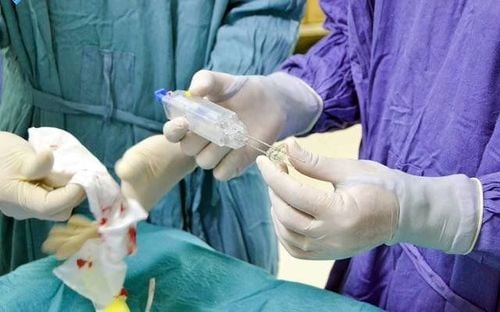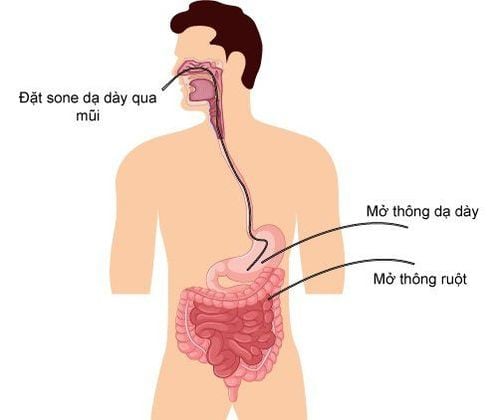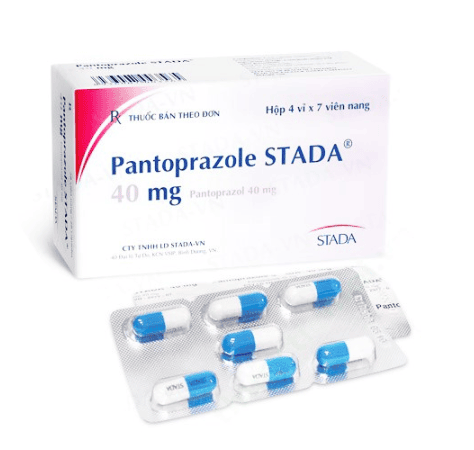This is an automatically translated article.
The article is professionally consulted by Master, Doctor Nguyen Thai Binh - Gastroenterologist - Department of General Surgery - Vinmec Ha Long International General Hospital. Master, Doctor Nguyen Thai Binh has more than 20 years of experience working in abdominal surgery.From the reality of the risk of infection and discomfort for patients who have to save the nasogastric tube for a long time, the endoscopic gastric bypass method was born and successfully applied on many patients. The procedure is fast (from 10 to 15 minutes), safe, with few complications, and can be performed right at the endoscopy room or hospital bed.
1. What is endoscopic gastrostomy?
Percutaneous endoscopic gastrostomy (PEG) is also known as endoscopic percutaneous gastrostomy. This is an interventional endoscopic procedure for long-term feeding and nutrition in patients with swallowing impairment, this is a new technique to reduce surgical costs and hospital stay for patients. . Endoscopic gastrostomy will insert a nasogastric tube through the abdominal wall into the patient's stomach without surgery.
2. In what case is gastric bypass indicated?
Normally, PEG is indicated in clinical situations where the patient cannot eat orally and needs to be fed through a tube for more than 4 weeks, including:This method is usually to feed directly into the stomach to improve health because the patient cannot eat by mouth due to tumors in the mouth, throat, neck, chest and esophagus causing pressure to make the patient unable to swallow. Nutrition in cases of poor nutrition due to: cerebrovascular accident, traumatic brain injury, head and neck trauma, elderly patients with mental disorders, patients with anorexia and severe malnutrition. .. Long-term gastrointestinal nutrition due to: cancer of the esophagus, mouth, pharynx, and throat, causing pressure on the patient to swallow, but the scope can still pass through the stomach. Other mechanical obstructions of the upper gastrointestinal tract. Temporary nourishment: esophageal stricture due to burns, radiation inflammation and after major abdominal surgery requires additional nourishment. Patients with severe Crohn's disease, extensive burns, radiation or chemotherapy Esophageal fistula, pneumonia, ulceration caused by long-term nasogastric tube placement. In addition, PEG is indicated for the purpose of decompression in the following cases: Pseudo-obstruction syndrome; Gastroparesis due to diabetes, neuromuscular disease...
3. Advantages of gastric bypass technique
The technique is simple, safe, and has few complications. It can be done right at the hospital bed or in the endoscopy room. Using a relatively simple and inexpensive kit, reducing costs. Reduced hospital stay compared to surgery Minimized invasive surgical intervention. Minimize complications, reduce overload for central hospitals.4. Procedure to perform percutaneous gastrostomy by endoscopic method
The procedure for performing the endoscopic gastrostomy technique is as follows: the patient will have a gastroscopy to thoroughly check the entire condition of the stomach. Then the doctor will use a special needle to attach the stomach wall close to the abdominal wall under the guidance of the endoscope. Next, the doctor will make a small incision about 10mm to insert the dilation tube into the stomach. The catheter will be correctly threaded into the stomach through this dilator and fixed before the dilator is removed. The entire procedure is controlled directly under the endoscope and takes about 10 to 15 minutes. The patient will be monitored and can use the catheter soon after.
5. Contraindications of endoscopic gastrostomy
There is a lesion in the oropharynx that the endoscope cannot enter the stomach. Severe coagulopathy or on anticoagulation therapy. Hepatosplenomegaly, portal hypertension, ascites or peritoneal dialysis. History of stomach surgery, stomach disease (ulcer or cancer). Leakage in the upper part of the small intestine, small bowel obstruction.Please dial HOTLINE for more information or register for an appointment HERE. Download MyVinmec app to make appointments faster and to manage your bookings easily.














